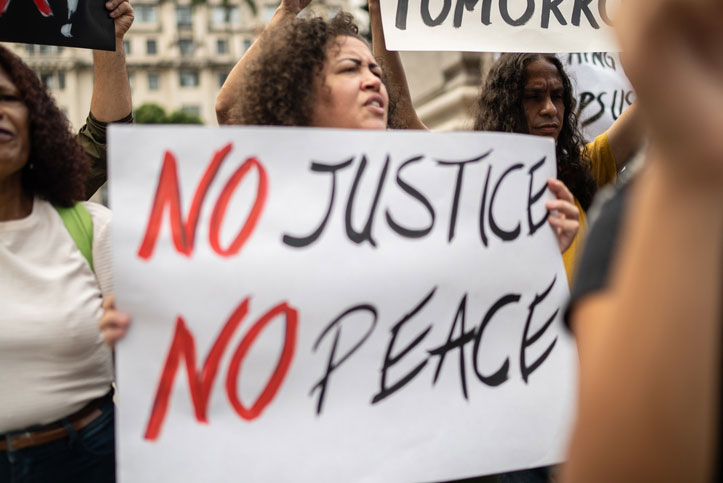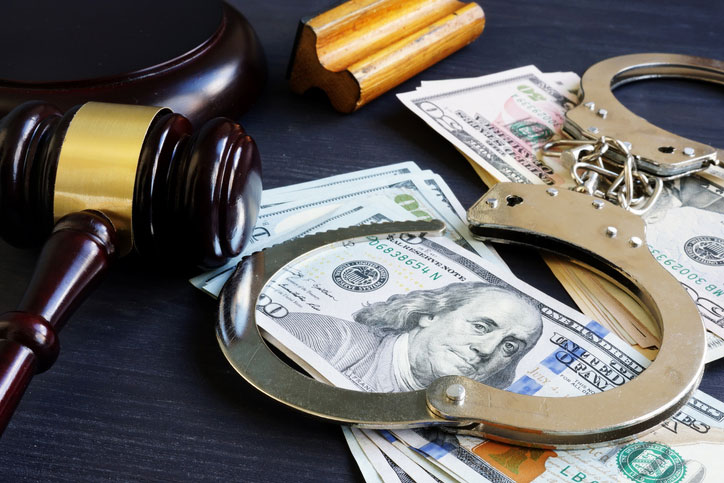Written by Scott Wilson
New York is the bold new face of the American bail reform movement today.
Add that to the list of the many other innovations and social justice efforts where New York leads the way.
Bail reform across the country seeks to remove the economic injustice of cash bail and bond requirements from pre-trial incarceration decisions. In a society where wealth disparity already creates so many divisions, it’s a painful fact that being on the have-not side of inequity also separates people from their freedom even before they have their day in court.
Mixing financial incentives with the criminal justice process is a recipe for injustice.
As one of the first states to make important and dramatic changes in the bail system, New York is upholding a proud social work tradition of doing the right thing for the unprivileged first. But being first is anything but smooth sailing, and social workers still have battles to fight.
How Cash Bail Became Antithetical to Justice Across New York State
Bail is a concept that goes back to English common law. At heart, it’s a compromise between the legal maxim of a presumption of innocence and the reality that some of those charged are guilty and will either commit further crimes if left free or attempt to escape justice. Bail puts restrictions on those charged so that the state can be assured they will appear for trial, but grants a measure of freedom until their case has been heard.
Even in its ancient English origins, bail was controversial. Sheriffs had broad authority to set the terms, and it was often abused.
The history of those abuses carried over to the American colonies, which is why the Eighth Amendment explicitly states that “Excessive bail shall not be required…”
Excessive bail shall not be required, nor excessive fines imposed, no cruel and unusual punishments inflicted.
~ 8th Amendment to the Constitution of the United States
Unfortunately, the modern cash bail system violates every part of the amendment in the eyes of the average citizen. Much of that comes down to how the American bail system evolved to become a profit-driven industry.
Inequity Pervades Modern Cash Bail Systems
Historically, bail was more a matter of personal recognizance and community guarantors. In small, tightly connected villages or neighborhoods, defendants with strong ties and people to vouch for them could be relied on to appear to face charges. As society became more disconnected and anonymous, American courts began counting on the financial incentive of surety bonds.
This cash bail system is where most of the injustice in the system arises. Put simply, it creates a situation where those with money can purchase their freedom; those without languish in holding cells in places like Rikers Island, where almost 90 percent of prisoners are held without being convicted of any crime whatsoever.
The conditions at Rikers are horrendous for inmates. And when you realize that most of them have not even been properly convicted or sentenced in a court of law, you understand the true extent of the injustice.
Similar situations exist throughout the state. Individuals being accused of similar crimes and posing similar flight risks who have the cash or connections to come up with bail can walk free until trial. Those without risk terrible personal harm and mental anguish as they wait for a backed-up court system to hear their case.
The Tragedy of the Kalief Browder Story Gave Traction to the Cash Bail Reform Movement in New York
 The injustice is obvious. Doing something about it hasn’t been easy.
The injustice is obvious. Doing something about it hasn’t been easy.
Social workers have long stood against the excesses and inhumane conditions at Rikers and other pre-trial detention facilities. There’s no excuse for such prisons even for convicted prisoners, and that fight is still on.
But it was the very fact of that torturous environment combined with the uncertainty of guilt that spurred bail reform in New York.
Kalief Browder was 17 when he was accused of stealing a backpack in the Bronx. Charged with second-degree robbery, his bail was set at $3,000. With a bond, the actual cash he needed to come up with was $900. But neither he or his family had it.
Obscenely, it was often faster to be released from detention in New York by pleading guilty to a crime you haven’t committed than by waiting for the justice system to allow you a trial to prove your innocence.
Instead, he spent three years on Rikers awaiting trial, two of which were in solitary. He was beaten by both other inmates and guards.
His case was never heard; after innumerable delays, prosecutors simply dismissed the charge.
Even after being released to go home, that time in solitary left him traumatized and severely depressed. Browder was never the same. At age 22, he hung himself.
A Spark of Protest Leads to Real Change in New York Bail Rules

The Kalief Browder story was enough to set off a groundswell of support for eliminating cash bail in New York.
Social workers and social justice organizations had been lobbying and laying the groundwork for decades. They were ready when public opinion shifted.
A combination of public defenders, civil liberties organizations, and groups focused on racial justice and social equity backed legislation to reform the New York cash bail system.
In 2019, the New York State Legislature passed legislation as part of the 2019/2020 budget cycle to eliminate cash bail for most misdemeanor and non-violent felony crimes. Up to 90 percent of arrests in the state would be eligible for bail without posting bond, based on a judge’s individual evaluation of their flight risk. Prior criminal actions were not brought into the equation.
The landmark legislation went into effect in January of 2020.
Big Changes Come With the Risk of Backsliding – Something Social Workers Must Guard Against
Like all kinds of revolutionary social justice legislation, New York bail reform efforts have gone back into the shop for a number of adjustments.
Almost immediately after the initial reform package went into effect, lawmakers passed a set of revisions that greatly expanded the list of offenses for which cash bail would once again be used. It also expanded the discretion of judges to impose further conditions on pre-trail release.
On the plus side, provisions were added to better track outcomes from the reforms. Those numbers have become important in New York and elsewhere to show that reform efforts have not measurably increased either risks to the public or flight risks by the accused.
But pushback continues. In 2022, both Governor Kathy Hochul and NYC Mayor Eric Adams began pushing the legislature to return more discretion to judges to impose cash bail conditions.
Rising crime rates during the COVID-19 pandemic tended to obscure the impact of bail reform, while also making politicians nervous about being seen as soft on crime.
Social workers across the state of New York have been instrumental in making the new bail system work.
One of the most common ways that judges set non-cash conditions for bail now is through supervised release. As a modern update to the ancient practice of relying on community ties and collective pressure from family and friends to keep the accused committed to their court appearance, non-profit social service organizations now take on that role. The New York City Criminal Justice Agency, for example, assists around 10,000 offenders each month with personalized plans to keep from reoffending and to appear for trial as promised.
Social work case managers at these organizations develop a personal understanding of the challenges facing defendants. They offer reminders about court dates and work with individuals to make their trials by arranging transportation or making referrals to other support services.
It’s a big victory in a bigger battle over the future of the penal system in America. With freedom and fairness on the line, New York social workers specializing in criminal justice will continue to fight as long as they need to.

